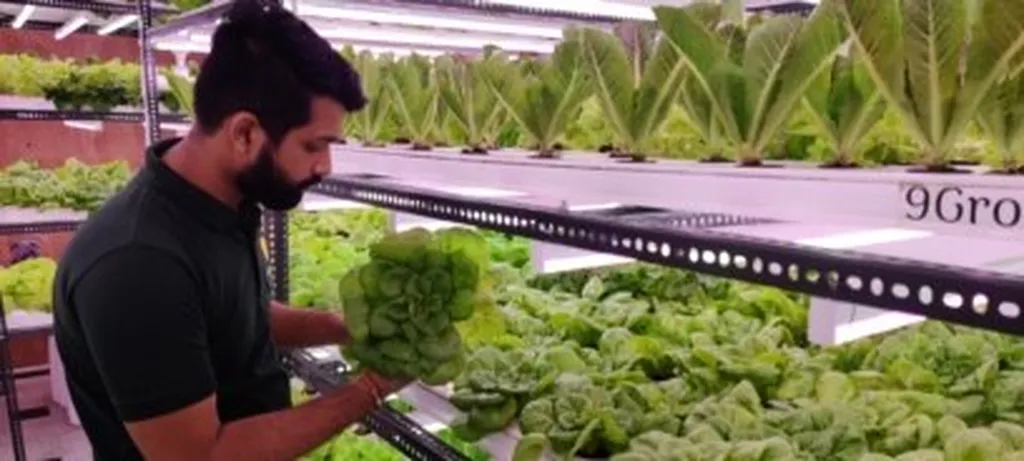In the heart of Tamil Nadu, India, a groundbreaking study led by Dr. Arivalagan Gomathi from the Department of Horticulture at the Central University of Tamil Nadu is unlocking new possibilities for sustainable agriculture. The research, published in *Frontiers in Nanotechnology* (which translates to *Frontiers in Ultra-Fine Technology*), explores the use of green-synthesized selenium nanoparticles (SeNPs) to enhance the growth and nutritional value of amaranth microgreens under drought conditions. This innovative approach could revolutionize how we address food security and crop resilience in an era of climate change.
Drought stress is a significant challenge for farmers worldwide, often leading to reduced crop yields and diminished nutritional quality. Dr. Gomathi’s team has discovered that SeNPs, synthesized from the leaf extract of Cassia auriculata, can mitigate these effects. “We found that these nanoparticles not only improve the growth of amaranth microgreens but also enhance their nutritional profiles,” Dr. Gomathi explained. The study revealed that SeNPs significantly boosted germination rates, plant height, and overall yield, even under drought conditions induced by polyethylene glycol (PEG).
The nanoparticles were characterized using advanced techniques such as UV-Vis spectroscopy, TEM, XRD, FT-IR, and DLS, confirming their crystalline nature and spherical shape, ranging from 80.6 to 135 nanometers. Toxicity screening identified 1,000 ppm as growth-inhibitory, while 100 ppm emerged as the optimal concentration for plant growth. At this concentration, SeNPs enhanced germination to 97.5%, increased yield to 330 milligrams, and boosted plant height to 5.6 centimeters.
Beyond physical growth, the treated microgreens exhibited higher levels of total protein, carbohydrates, flavonoids, vitamin C, and antioxidant enzyme activities. “The treated microgreens showed a remarkable increase in selenium accumulation, reaching 10.69 milligrams per gram of dry weight,” Dr. Gomathi noted. Importantly, the SeNPs had no negative impact on beneficial soil microbes, including Pseudomonas aeruginosa, Bacillus subtilis, and Trichoderma viride, ensuring a sustainable approach to agriculture.
The implications of this research extend far beyond the laboratory. As climate change intensifies, farmers face increasing pressure to produce high-quality crops under adverse conditions. Dr. Gomathi’s findings suggest that green-synthesized SeNPs could be a game-changer, offering a sustainable and effective way to enhance crop resilience and nutritional value. “This is the first comprehensive report on Cassia auriculata-mediated SeNPs administered through seed, soil, and foliar application to enhance drought tolerance and nutrient status in Amaranth microgreens,” Dr. Gomathi stated.
The study’s results, published in *Frontiers in Nanotechnology*, highlight the potential of nanotechnology in agriculture. By leveraging green synthesis methods, researchers can develop eco-friendly solutions that promote sustainable farming practices. As the world grapples with the challenges of food security and climate change, innovations like these offer hope for a more resilient and nutritious future.
Dr. Gomathi’s work is a testament to the power of interdisciplinary research, combining nanotechnology, plant science, and sustainable agriculture to address real-world problems. As the agricultural sector continues to evolve, the integration of nanotechnology could pave the way for innovative solutions that enhance crop productivity and nutritional quality, ultimately benefiting farmers and consumers alike.

